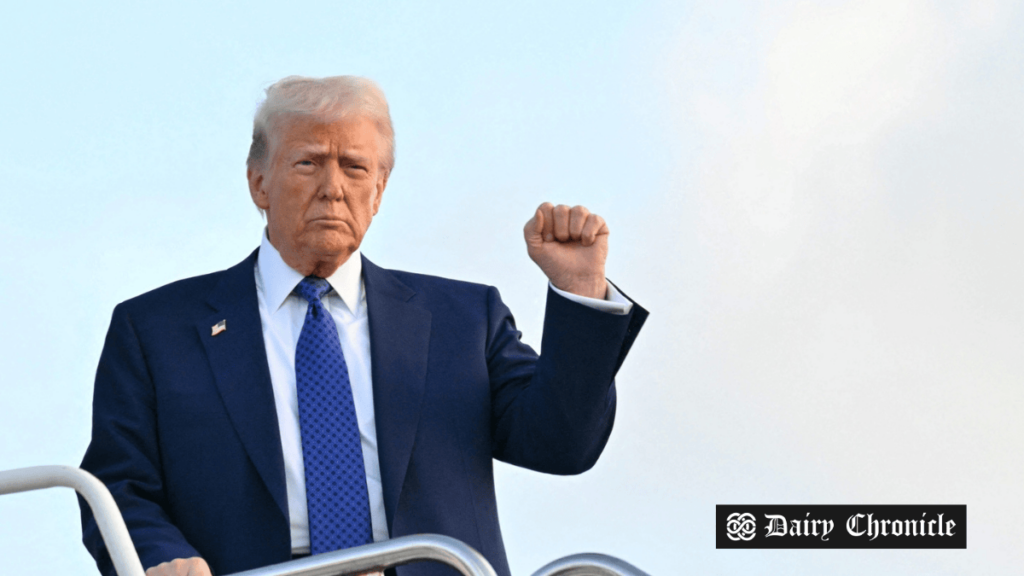The United States has intensified its tariff policies, imposing new levies on imports from Canada, Mexico, and China. This move, effective March 4, 2025, has triggered global economic concerns, trade shifts, and retaliatory actions. The new tariffs, which impact key industries such as agriculture, automotive, and semiconductors, have sparked market volatility and could lead to prolonged economic uncertainty.
The United States has escalated its trade restrictions by enforcing new tariffs on imports from Canada, Mexico, and China, triggering global economic uncertainty. The policy, introduced under the administration of former President Donald Trump and carried forward in 2025, has been implemented as part of broader efforts to address trade imbalances and national security concerns. These tariffs have led to retaliatory measures from affected nations, disrupting international markets and trade relations.
Tariffs and Economic Fallout
The new measures impose a 25% tariff on Canadian and Mexican imports and an additional 10% tariff increase on Chinese goods. While U.S. officials claim these steps are necessary to protect domestic industries, economists warn of potential inflation, economic slowdowns, and supply chain disruptions. Analysts fear that Canada and Mexico, heavily dependent on U.S. trade, could face severe economic downturns if these tariffs persist.
In an attempt to ease tensions, Mexico has extradited 29 high-profile cartel figures to the U.S., hoping to negotiate better trade terms. Meanwhile, Canada has appointed a “fentanyl czar” to address American concerns over drug trafficking. However, these diplomatic efforts have not yet led to any exemptions from the tariffs, leaving businesses and policymakers uncertain about the long-term impact.
China’s Strategic Response and Agricultural Market Disruptions
In retaliation, China has imposed 10%–15% tariffs on key U.S. agricultural products, including soybeans, wheat, chicken, and cotton. These countermeasures directly impact American farmers who rely heavily on Chinese markets. With China shifting its agricultural imports to Brazil and Argentina, U.S. producers risk being permanently displaced from critical export markets. Experts predict rising soybean prices in South America, benefiting competitors at the expense of U.S. agribusiness.
Implications for Automotive, Pharmaceutical, and Semiconductor Sectors
The next phase of the U.S. tariff policy, set for April 2, 2025, will target high-tech industries, including automotive, pharmaceutical, and semiconductor manufacturing.
- The automotive industry faces rising costs, with Canadian and Mexican vehicle components subject to heavy tariffs. This could lead to higher car prices and reduced competitiveness for North American manufacturers.
- The pharmaceutical sector relies on cross-border supply chains for active ingredients, and trade restrictions could drive up drug prices, impacting healthcare affordability.
- The semiconductor industry, a crucial component of global technology, faces increased geopolitical tensions as tariffs further strain U.S.-China relations, potentially disrupting innovation.
Market Reactions and Future Trade Landscape
Financial markets have reacted negatively to the escalating trade war. Asian stock indices suffered declines after the announcement, with European markets following suit. Investors remain cautious about the long-term effects of protectionist policies, as continued trade disruptions could weaken global economic growth and fuel inflation.
Economists warn that unless trade negotiations improve, the global GDP forecast may be revised downward, and emerging economies reliant on U.S. trade could suffer significant setbacks. The increased costs of raw materials and consumer goods due to disrupted supply chains may contribute to higher global inflation rates.
A Shift in Global Trade Relations
As the U.S. enforces stricter trade policies, the global economic order is undergoing rapid transformation. Countries are forging new alliances and diversifying supply chains to counteract future disruptions. While the Trump-era tariff strategy aimed to strengthen U.S. industry, its long-term effects remain uncertain. However, its immediate consequences—market instability, economic slowdown, and shifting trade alliances—are already unfolding.
The world now faces a critical moment in trade policy, where protectionism and economic nationalism could redefine global commerce. The question remains: Will these tariffs achieve their intended goals, or will they deepen the economic divide among the world’s leading economies?



